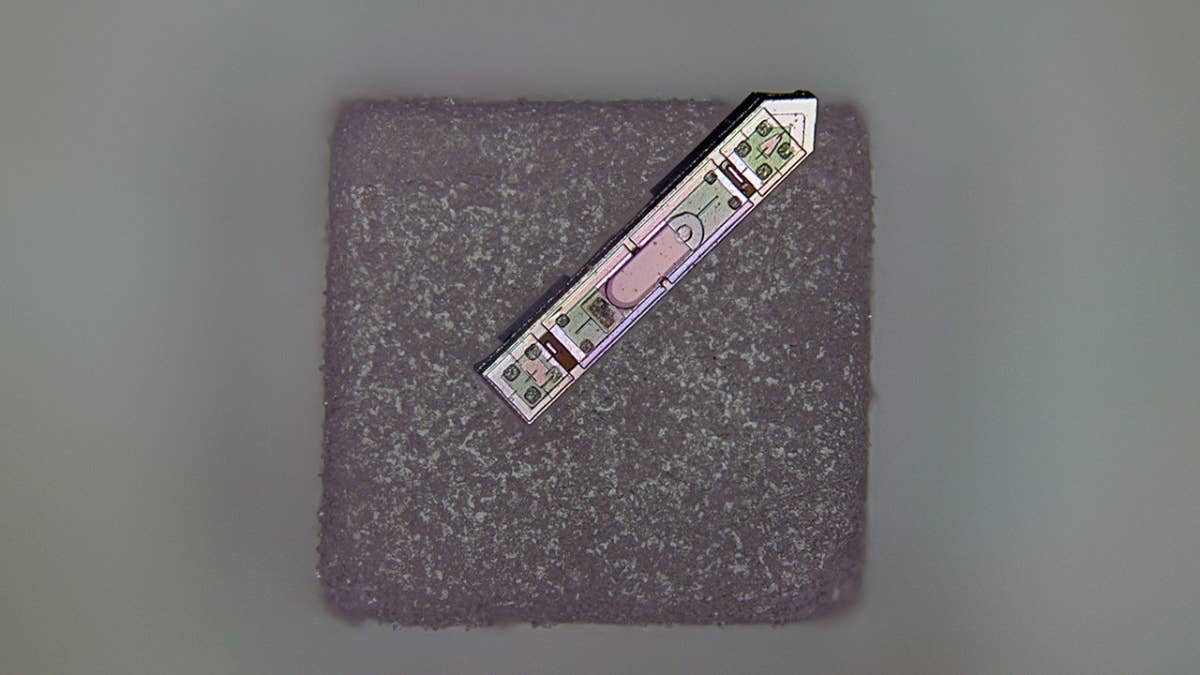Scientists Just Showed How to Make a Quantum Computer Using Sound Waves

Share
A weird and wonderful array of technologies are competing to become the standard-bearer for quantum computing. The latest contender wants to encode quantum information in sound waves.
One thing all quantum computers have in common is the fact that they manipulate information encoded in quantum states. But that’s where the similarities end, because those quantum states can be induced in everything from superconducting circuits to trapped ions, ultra-cooled atoms, photons, and even silicon chips.
While some of these approaches have attracted more investment than others, we’re still a long way from the industry settling on a common platform. And in the world of academic research, experimentation still abounds.
Now, a team from the University of Chicago has taken crucial first steps towards building a quantum computer that can encode information in phonons, the fundamental quantum units that make up sound waves in much the same way that photons make up light beams.
The basic principles of how you could create a “phononic” quantum computer are fairly similar to those used in “photonic” quantum computers. Both involve generating and detecting individual particles, or quasiparticles, and manipulating them using beamsplitters and phase shifters. Phonons are quasiparticles, because although they act like particles as far as quantum mechanics are concerned, they are actually made up of the collective behavior of large numbers of atoms.
The group from Chicago had already demonstrated that they could generate individual phonons using surface acoustic waves, which travel along the surface of a material at frequencies roughly a million times higher than a human can hear, and use them to transfer quantum information between two superconducting qubits.
But in a new paper in Science, the researchers demonstrate the first phononic beamsplitter, which, as the name suggests, is designed to split acoustic waves. This component is a critical ingredient for a phononic quantum computer as it makes it possible to take advantage of quantum phenomena like superposition, entanglement, and interference.
Their setup involves two superconducting qubits fabricated on flat pieces of sapphire, joined together by a channel made of lithium niobate. Each qubit is connected via a tunable coupler to a device called a transducer, which converts electrical signals into mechanical ones.
This is used to generate vibrations that create the individual phonons in the channel connecting the qubits, which features a beamsplitter made of 16 parallel metal fingers in the middle. The entire setup is chilled to just above absolute zero.
To demonstrate the capabilities of their system, the researchers first excited one of the qubits to get it to generate a single phonon. This traveled along the channel to the beamsplitter, but because quantum particles like phonons are fundamentally indivisible, instead of splitting it went into a quantum superposition.
Be Part of the Future
Sign up to receive top stories about groundbreaking technologies and visionary thinkers from SingularityHub.


This refers to the ability of a quantum system to be in multiple states simultaneously, until they are measured and collapse down to one of the possibilities. In this case the phonon was both reflected back to the original qubit and transmitted to the second qubit, which were able to capture the phonon and store the quantum superposition.
In a second experiment, the researchers managed to replicate a quantum phenomena that is fundamental to the way logic gates are created in photonic quantum computers called the Hong-Ou-Mandel effect. In optical setups, this involves two identical photons being fed into a beamsplitter from opposite directions simultaneously. Both then enter a superposition, but these outputs interfere with each such that both photons end up traveling together to just one of the detectors.
The researchers showed that they could replicate this effect using phonons, and crucially, that they could use the qubits to alter the characteristics of the phonons so that they could control which direction the output travels in. That’s a crucial first step towards building a practical quantum computer, says Andrew Cleland, who led the study.
“The success of the two-phonon interference experiment is the final piece showing that phonons are equivalent to photons,” Cleland said in a press release. “The outcome confirms we have the technology we need to build a linear mechanical quantum computer.”
The researchers concede that the approach is unlikely to directly compete with optical approaches to quantum computing, because the components are much larger and slower. However, their ability to seamlessly interface with superconducting qubits could make them promising for hybrid computing schemes that combine the best of both worlds.
It’s likely to be a long time until the underlying components reach the sophistication and industry-readiness of other quantum approaches. But it seems like the race for quantum advantage has just gotten a little more crowded.
Image Credit: BroneArtUlm / Pixabay
Related Articles

How Scientists Are Growing Computers From Human Brain Cells—and Why They Want to Keep Doing It

These Brain Implants Are Smaller Than Cells and Can Be Injected Into Veins

This Wireless Brain Implant Is Smaller Than a Grain of Salt
What we’re reading
